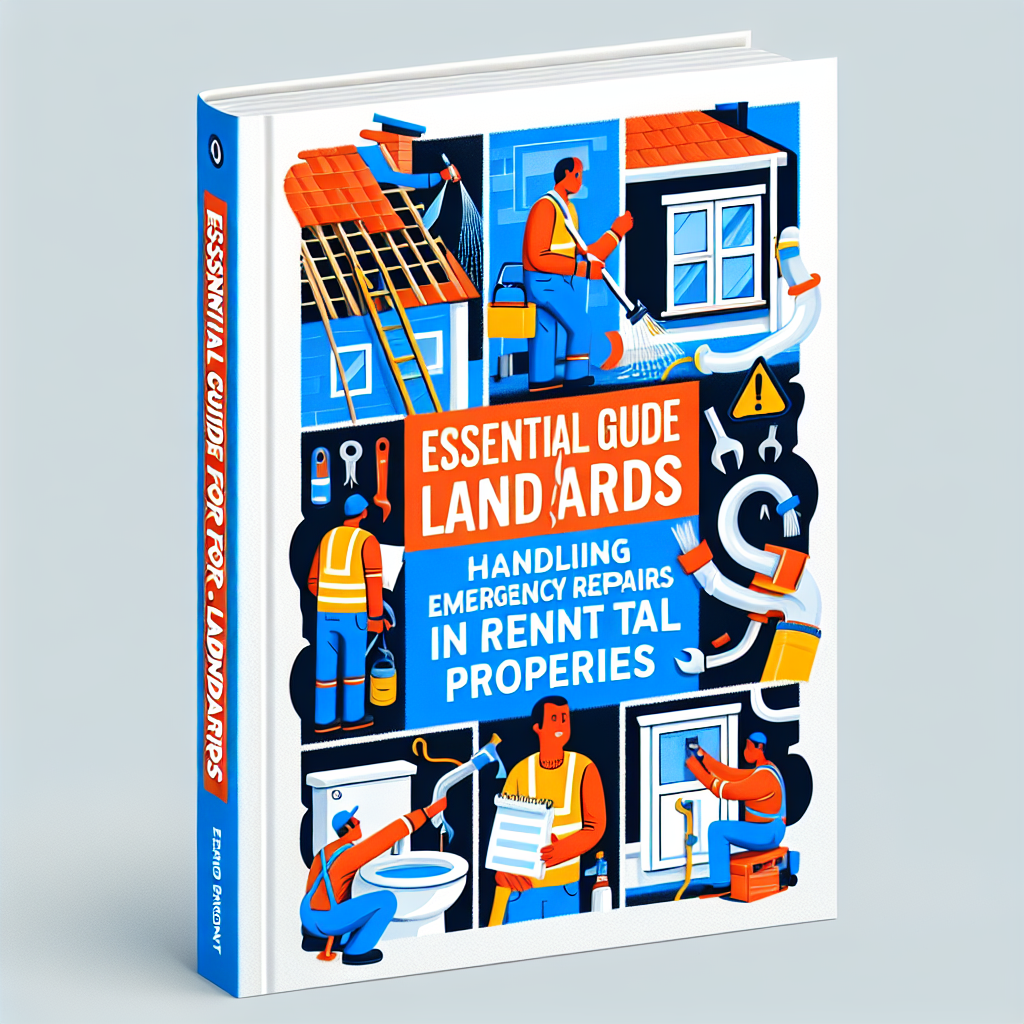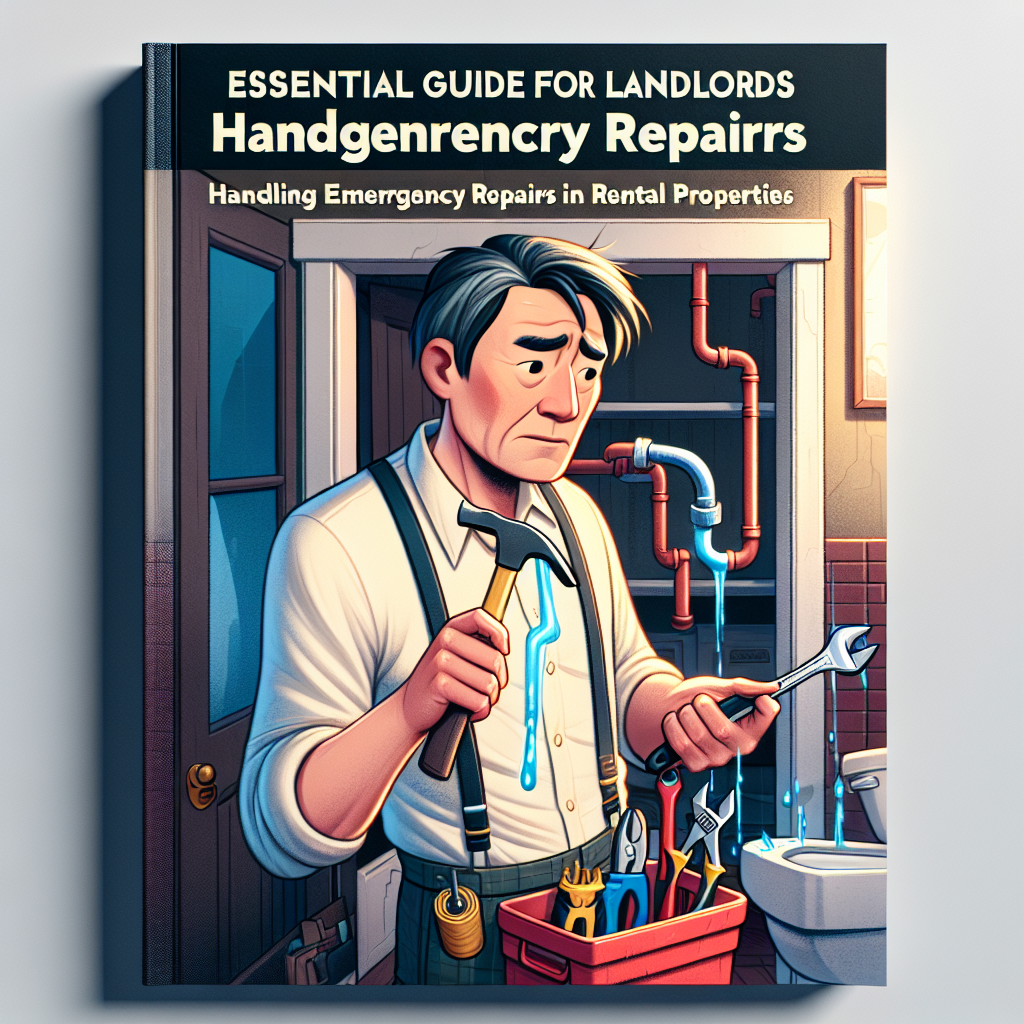-
Table of Contents
- Essential Guide for Landlords: Handling Emergency Repairs in Rental Properties
- Understanding Emergency Repairs
- Common Types of Emergency Repairs
- Legal Obligations and Responsibilities
- Tenant Rights and Landlord Responsibilities
- Creating an Emergency Repair Plan
- Steps to Develop an Emergency Repair Plan
- Effective Communication with Tenants
- Best Practices for Communicating with Tenants
- Case Studies: Real-Life Examples of Emergency Repairs
- Case Study 1: Burst Pipe in a Multi-Unit Building
- Case Study 2: Electrical Fire in a Single-Family Home
- Preventative Measures to Minimize Emergencies
- Regular Maintenance Tips
- Insurance and Financial Preparedness
- Types of Insurance for Landlords
- Building Financial Reserves
- Conclusion
Essential Guide for Landlords: Handling Emergency Repairs in Rental Properties

As a landlord, ensuring the safety and satisfaction of your tenants is paramount. One of the most critical aspects of property management is handling emergency repairs efficiently and effectively. This guide will provide you with comprehensive insights into managing emergency repairs, from understanding what constitutes an emergency to implementing a robust response plan. By the end of this article, you will be well-equipped to handle any emergency repair situation that arises in your rental properties.
Understanding Emergency Repairs
Before diving into the specifics of handling emergency repairs, it is essential to understand what qualifies as an emergency. Emergency repairs are issues that pose an immediate threat to the safety, health, or security of tenants or the property itself. These situations require prompt attention to prevent further damage or harm.
Common Types of Emergency Repairs
- Plumbing Issues: Burst pipes, severe leaks, or sewage backups.
- Electrical Problems: Power outages, exposed wiring, or electrical fires.
- Heating and Cooling Failures: Broken furnaces in winter or malfunctioning air conditioning in extreme heat.
- Structural Damage: Roof leaks, broken windows, or compromised walls.
- Security Concerns: Broken locks, doors, or windows that compromise tenant safety.
Legal Obligations and Responsibilities
Landlords have a legal obligation to maintain their rental properties in a habitable condition. This includes addressing emergency repairs promptly. Failure to do so can result in legal consequences, including fines, lawsuits, and loss of rental income.
Tenant Rights and Landlord Responsibilities
Tenants have the right to live in a safe and habitable environment. Landlords are responsible for ensuring that their properties meet these standards. This includes:
- Providing essential services such as water, electricity, and heating.
- Addressing emergency repairs within a reasonable timeframe.
- Communicating effectively with tenants about repair timelines and progress.
Creating an Emergency Repair Plan
Having a well-defined emergency repair plan is crucial for landlords. This plan should outline the steps to take when an emergency arises, ensuring a swift and organized response.
Steps to Develop an Emergency Repair Plan
- Identify Potential Emergencies: List common emergency scenarios that could occur in your rental properties.
- Establish Priorities: Determine which emergencies require immediate attention and which can be addressed within a few hours.
- Compile a List of Trusted Contractors: Have a list of reliable contractors and service providers who can respond quickly to emergencies.
- Set Up a Communication System: Ensure tenants know how to report emergencies and have a clear line of communication with you or your property management team.
- Document Procedures: Create a detailed guide outlining the steps to take during an emergency, including contact information for contractors and emergency services.
Effective Communication with Tenants
Clear and timely communication with tenants is essential during an emergency. Keeping tenants informed about the status of repairs and expected timelines can help alleviate stress and maintain a positive landlord-tenant relationship.
Best Practices for Communicating with Tenants
- Provide Multiple Contact Methods: Ensure tenants can reach you via phone, email, or a dedicated emergency hotline.
- Set Expectations: Inform tenants about the typical response times for different types of emergencies.
- Regular Updates: Keep tenants updated on the progress of repairs and any delays that may occur.
- Follow Up: After the repair is completed, follow up with tenants to ensure they are satisfied with the resolution.
Case Studies: Real-Life Examples of Emergency Repairs
Examining real-life examples can provide valuable insights into handling emergency repairs effectively. Here are two case studies that highlight different emergency scenarios and the responses taken by landlords.
Case Study 1: Burst Pipe in a Multi-Unit Building
In a multi-unit apartment building, a tenant reported a burst pipe in their bathroom, causing significant water damage. The landlord immediately contacted a trusted plumber who arrived within an hour to stop the leak and begin repairs. The landlord also arranged for a water damage restoration company to address the affected areas. Throughout the process, the landlord kept all tenants informed about the situation and the expected timeline for repairs. The prompt response and clear communication helped minimize damage and maintain tenant satisfaction.
Case Study 2: Electrical Fire in a Single-Family Home
A tenant in a single-family rental home reported an electrical fire in the kitchen. The landlord instructed the tenant to evacuate the property and called the fire department. After the fire was extinguished, the landlord hired an electrician to assess and repair the electrical system. The landlord also arranged temporary housing for the tenant while repairs were being completed. By prioritizing tenant safety and addressing the issue promptly, the landlord was able to resolve the emergency effectively.
Preventative Measures to Minimize Emergencies
While it is impossible to prevent all emergencies, taking proactive measures can reduce the likelihood of certain issues arising. Regular maintenance and inspections are key to identifying and addressing potential problems before they become emergencies.
Regular Maintenance Tips
- Inspect Plumbing Systems: Regularly check for leaks, corrosion, and other signs of wear and tear.
- Test Electrical Systems: Ensure all electrical components are functioning correctly and safely.
- Maintain HVAC Systems: Schedule regular servicing for heating and cooling systems to prevent breakdowns.
- Check Structural Integrity: Inspect roofs, windows, and doors for any signs of damage or wear.
- Ensure Security Features: Regularly test locks, alarms, and other security features to ensure they are in good working order.
Insurance and Financial Preparedness
Having adequate insurance coverage and financial reserves is crucial for handling emergency repairs. Insurance can help cover the costs of significant repairs, while financial reserves ensure you can address emergencies promptly without financial strain.
Types of Insurance for Landlords
- Property Insurance: Covers damage to the property caused by events such as fire, storms, and vandalism.
- Liability Insurance: Protects against legal claims if a tenant or visitor is injured on the property.
- Loss of Rent Insurance: Provides compensation for lost rental income if the property becomes uninhabitable due to damage.
Building Financial Reserves
Setting aside a portion of rental income each month can help build a financial reserve for emergency repairs. Aim to save at least 1-2% of the property’s value annually to cover unexpected expenses.
Conclusion
Handling emergency repairs in rental properties is a critical responsibility for landlords. By understanding what constitutes an emergency, fulfilling legal obligations, creating a robust emergency repair plan, and maintaining clear communication with tenants, landlords can effectively manage emergency situations. Additionally, taking preventative measures, having adequate insurance coverage, and building financial reserves can further ensure that landlords are well-prepared to handle any emergency that arises. By following the guidelines outlined in this article, landlords can protect their properties, ensure tenant safety, and maintain positive landlord-tenant relationships.
In summary, the key takeaways for landlords handling emergency repairs are:
- Understand what qualifies as an emergency repair.
- Fulfill legal obligations and responsibilities to maintain a habitable property.
- Create and implement a comprehensive emergency repair plan.
- Communicate effectively with tenants during emergencies.
- Learn from real-life case studies to improve response strategies.
- Take preventative measures to minimize the likelihood of emergencies.
- Ensure adequate insurance coverage and build financial reserves for unexpected repairs.
By adhering to these principles, landlords can navigate the challenges of emergency repairs with confidence and competence, ultimately ensuring the safety and satisfaction of their tenants.








